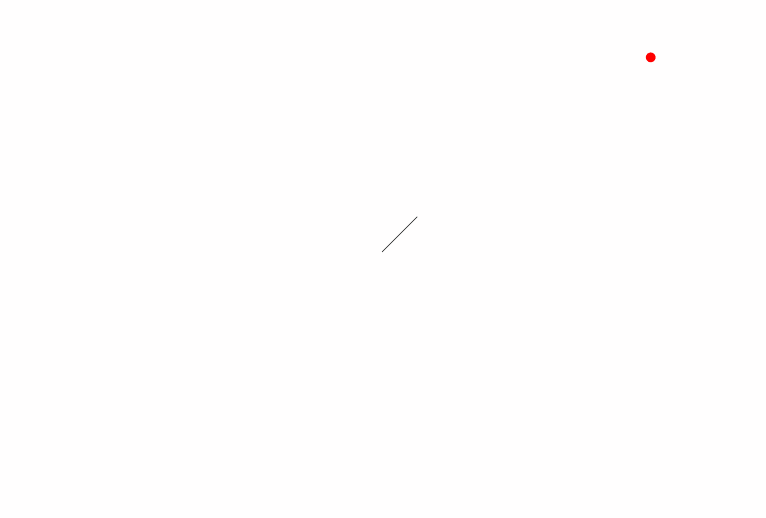Simple app in nannou
The library nannou is an “open-source creative-coding framework for Rust”. Among the simplest graphics app one always find some sort of “projectile app” or “rocket app”. Let’s see how such an app looks like in nannou.
A nannou app features three components:
-
the Model: The model function is returns a Model struct that contains the initial state of the app.
-
the View (aka the ‘rendering’): The view function is used to draw from the current state of the application
-
the Update: Think of the update as a function that is repeatedly called within an infinite game loop. The update together with all user interaction takes the place of the controller in the MVC (Model-View-Controller).
The main objects
The projectiles will be thrown from a little cannon (described by the angle at which it is pointing and its power).
struct Model {
cannon: Cannon,
projectiles: Vec<Projectile>,
}
struct Cannon {
angle: f32,
power: f32,
}
struct Projectile {
position: Point2,
velocity: Vec2,
}Model-View-Update
The model
fn model(app: &App) -> Model {
app.new_window()
.size(800, 600)
.view(view)
.build()
.unwrap();
Model {
cannon: Cannon {
angle: PI / 4.0,
power: 10.0,
},
projectiles: Vec::new(),
}
}The view
fn view(app: &App, model: &Model, frame: Frame) {
let draw = app.draw();
draw.background().color(WHITE);
draw_cannon(&draw, &model.cannon);
draw_projectiles(&draw, &model.projectiles);
draw.to_frame(app, &frame).unwrap();
}The update
fn update(app: &App, model: &mut Model, _update: Update) {
if app.elapsed_frames() % 60 == 0 {
fire_projectile(model);
}
update_projectiles(model);
}How it looks like

The entire app code
use nannou::prelude::*;
struct Model {
cannon: Cannon,
projectiles: Vec<Projectile>,
}
struct Cannon {
angle: f32,
power: f32,
}
struct Projectile {
position: Point2,
velocity: Vec2,
}
fn main() {
nannou::app(model)
.update(update)
.run();
}
fn model(app: &App) -> Model {
app.new_window()
.size(800, 600)
.view(view)
.build()
.unwrap();
Model {
cannon: Cannon {
angle: PI / 4.0,
power: 10.0,
},
projectiles: Vec::new(),
}
}
fn update(app: &App, model: &mut Model, _update: Update) {
if app.elapsed_frames() % 60 == 0 {
fire_projectile(model);
}
update_projectiles(model);
}
fn fire_projectile(model: &mut Model) {
let velocity = Vec2::new(
model.cannon.power * model.cannon.angle.cos(),
model.cannon.power * model.cannon.angle.sin(),
);
let projectile = Projectile {
position: pt2(0.0, 0.0),
velocity,
};
model.projectiles.push(projectile);
}
fn update_projectiles(model: &mut Model) {
for projectile in &mut model.projectiles {
projectile.velocity.y -= 0.1; // gravity
projectile.position += projectile.velocity;
}
}
fn view(app: &App, model: &Model, frame: Frame) {
let draw = app.draw();
draw.background().color(WHITE);
draw_cannon(&draw, &model.cannon);
draw_projectiles(&draw, &model.projectiles);
draw.to_frame(app, &frame).unwrap();
}
fn draw_cannon(draw: &Draw, cannon: &Cannon) {
draw.line()
.start(pt2(0.0, 0.0))
.end(pt2(
50.0 * cannon.angle.cos(),
50.0 * cannon.angle.sin(),
))
.color(BLACK);
}
fn draw_projectiles(draw: &Draw, projectiles: &[Projectile]) {
for projectile in projectiles {
draw.ellipse()
.xy(projectile.position)
.radius(5.0)
.color(RED);
}
}

